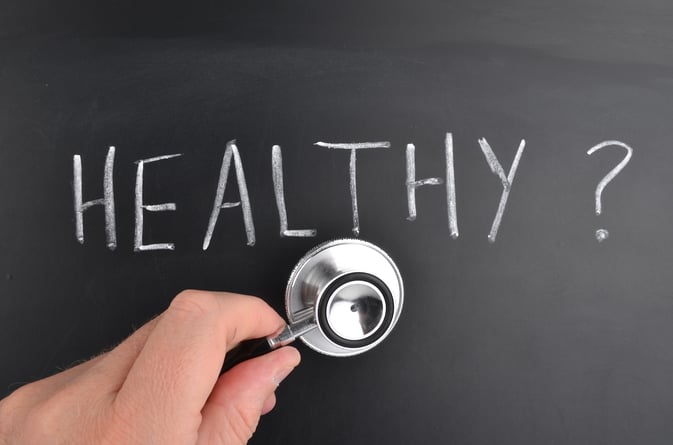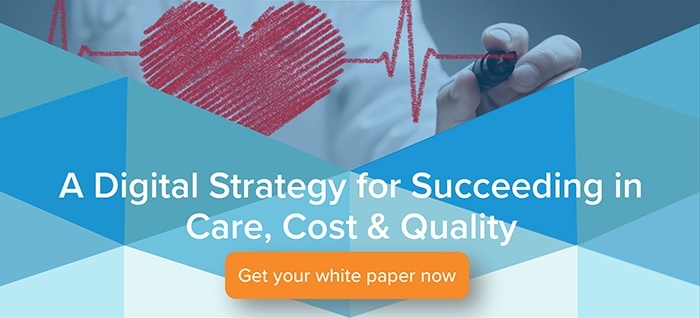 Only 12% of American adults are considered health literate. Why does this matter to patients and healthcare providers alike?
Only 12% of American adults are considered health literate. Why does this matter to patients and healthcare providers alike?
First, high levels of health literacy are associated with better patient self-care and outcomes. Second, attentiveness to this can be an effective way to improve population health. Digital health technology is a means to this end.
Advances in digital health technology have made it simpler for healthcare providers to impact patients’ health literacy. Here's how:
1. Technology improves access to health information.
As of this year, 9 out of 10 U.S. adults are online and 77 percent own a smartphone. That makes mobile technology the ideal way for healthcare providers to promote disease management and prevention outside the hospital or medical practice setting.
For example, Mercy Medical Center in Des Moines, Iowa, uses mobile health technology, including email communication, to educate, guide and track patients through their total joint replacement episodes of care. One patient noted:
“I really felt the emails helped me connect with the hospital, and gave me confidence that I could find information or resources if needed.”
Sustained patient-provider connections also improve patient activation, a key determinant of health outcomes.
See how setting expectations early improves outcomes and reduces readmission rates.
 2. When structured the right way, technology can make health information easier to understand.
2. When structured the right way, technology can make health information easier to understand.
Patient education can be made more engaging, personalized and effective with interactive quizzes, videos, strategic repetition and immediate feedback to patient actions or responses. Technology also enables the automatic, timely delivery of information, ensuring that it’s always relevant—whether on a schedule or on demand—and delivered in the way people want to consume it.
Of course, readability still matters, too. The Flesch Reading Ease Score and the Flesch-Kincaid Grade Level Score, though now considered antiquated by some, remain the most common indices used to measure readability. Both Flesch scores value shorter sentence and word length.
A Flesch Reading Ease score of 60–70, or about a 4th-grade reading level, is typically considered acceptable for information geared toward the general public.
Yet health and science writing is less likely to be in the suggested range. One study of pediatric orthopedic patient education from the American Academy of Orthopaedic Surgeons and Pediatric Orthopaedic Society of North America found that only 2% of the articles studied were below a 6th-grade reading level.
In this regard, the Flesch scores can be misleading. Health content, by necessity, may use longer words and sentences to explain diseases, conditions, tests and treatments with complex names or terminology. For example, pregnancy information would be remiss not to explain “amniocentesis”—a term patients are likely to encounter during prenatal appointments or in material about pregnancy tests. In so doing, the Flesch score gets elevated, but with proper context the information needn’t be difficult to understand.
That’s why at UbiCare, for example, we rely on human expertise, too. Professional health writers, editors and physician advisors create content that combines the right level of detail with context to aid readability.
3. Digital technology can enhance how patients process (i.e., use) the health information their care providers give them.
Technology can facilitate patients’ acting on health information—addressing needs and concerns holistically—even when they’re not in the care setting.
At UbiCare, we believe there are 3 key domains that effective healthcare content must cover to address how people process information:
- Knowledge – To alleviate misunderstanding and confusion, thereby reducing risk and error.
- Executive Function – To organize that knowledge, facilitate planning, set expectations and promote decision-making.
- Emotional / Psychosocial – To feel supported and understood, thereby reducing stress and anxiety that can impede action.
If one dimension is missing, healthcare providers will struggle to activate patients and improve health behaviors.
Improved Health Literacy and Reduced Care Costs
Using digital health technology to improve health literacy doesn’t just help patients understand and engage in their care; it can also lower healthcare costs. Greater health literacy is linked to an increased use of preventive services and lower hospitalization rates. That translates to better outcomes and lower costs.
It also leads to more efficient and enhanced use of medical staff time. When healthcare providers use technology to proactively and efficiently address common concerns, the care staff receives fewer of the same frequently asked questions. Physicians have more efficient appointments and can focus on more personal connections with their patients. Patients ask more informed questions because they have a better understanding of their situation. And all of that is good for everybody.








